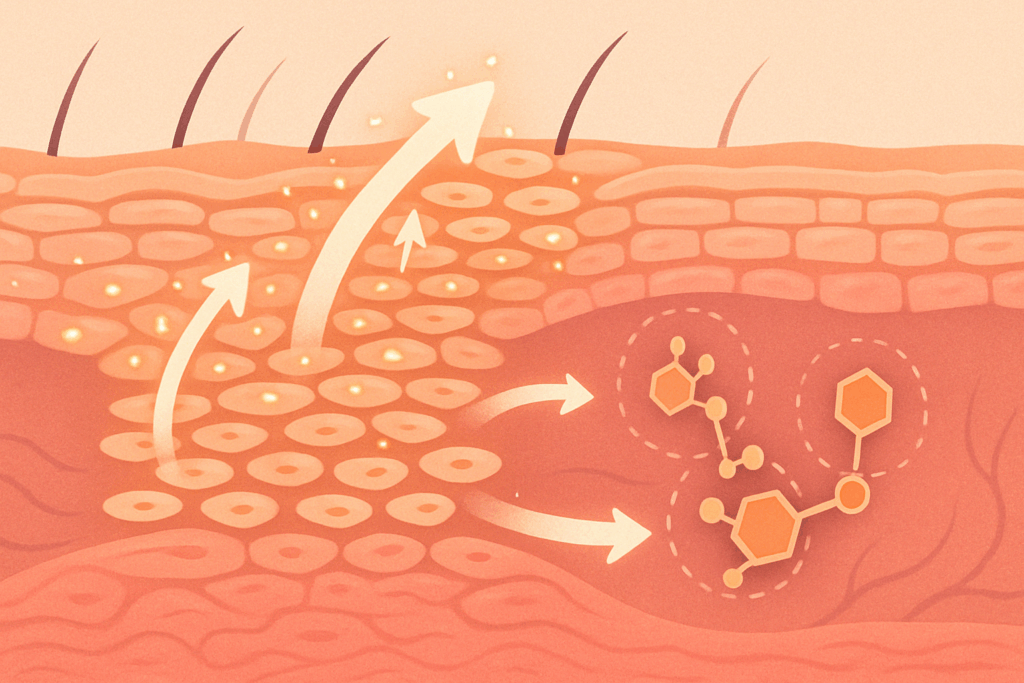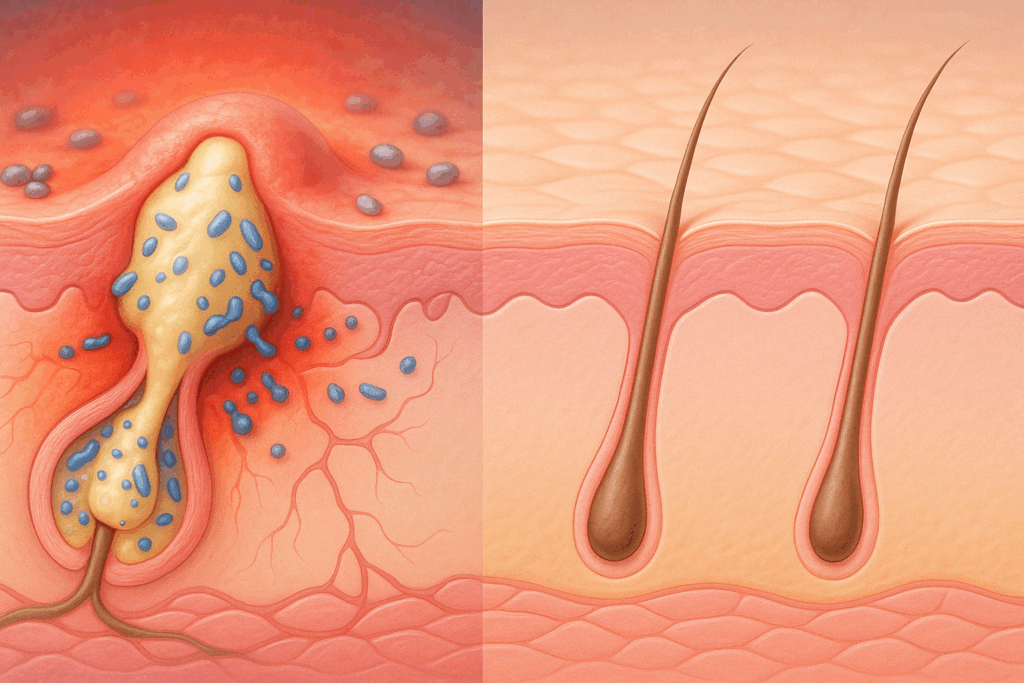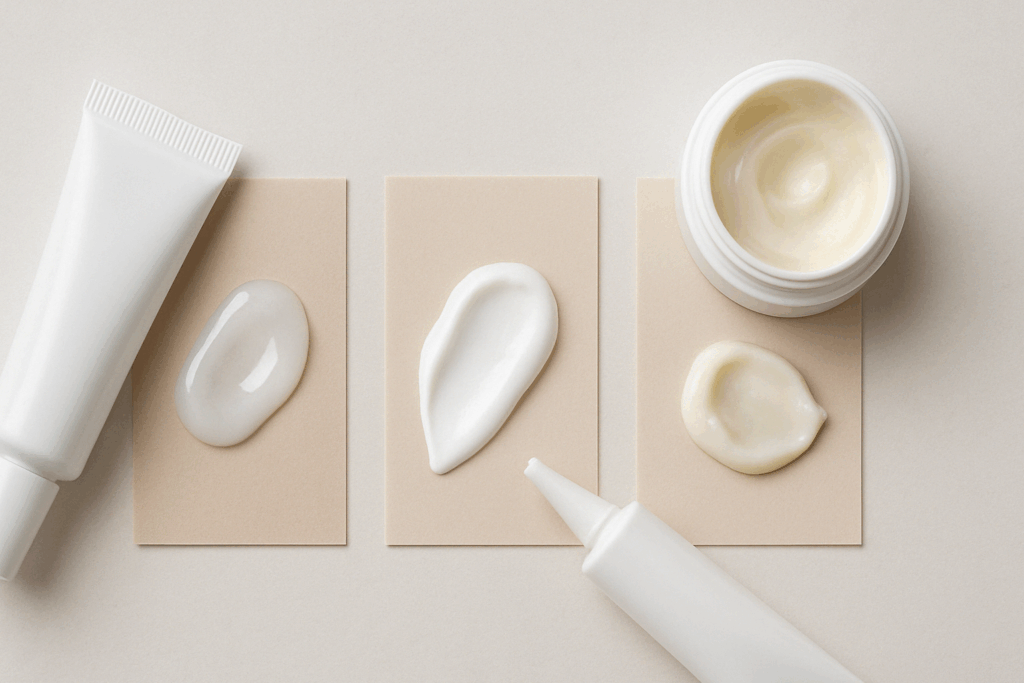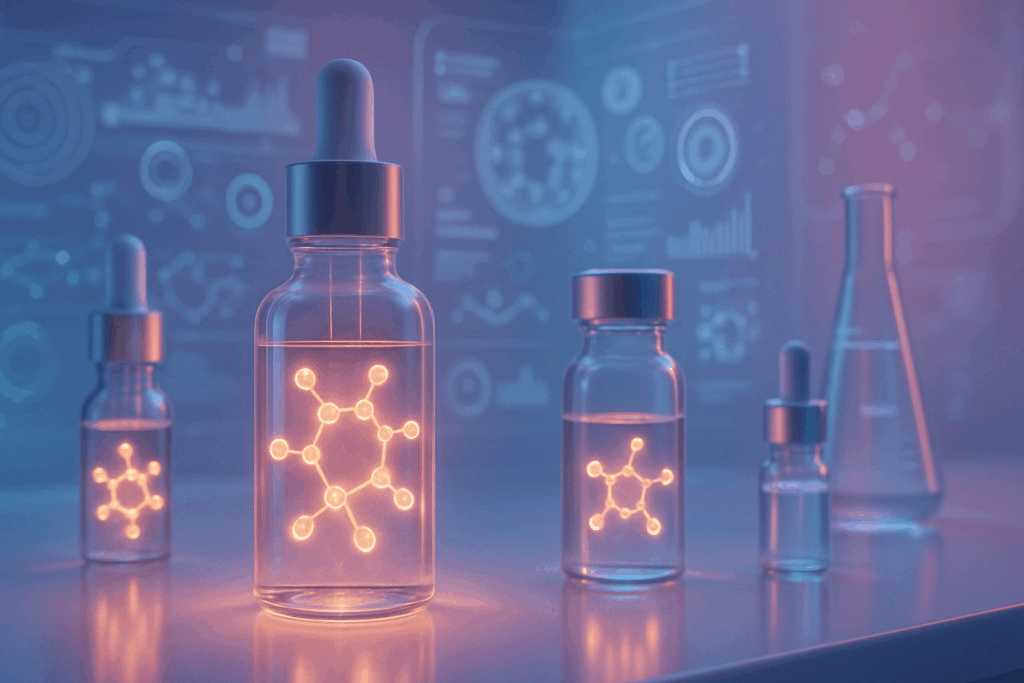In the realm of dermatological advancements, few treatments have achieved the enduring credibility and clinical validation of retinoid creams. From the moment retinoic acid cream emerged as a transformative acne solution in the 1970s, topical retinoids have become a foundational component of evidence-based skincare regimens. Yet despite their ubiquity in medicine cabinets and prescription pads, confusion persists about what retinoids do, how they function, and why they remain such a cornerstone for acne therapy. Understanding the full scope of their science-backed benefits is critical not only for patients navigating treatment options but also for healthcare providers recommending long-term skin health strategies.
You may also like: How to Choose Skin Care for Fine Lines: Evidence-Based Tips for Healthier, Younger-Looking Skin
Retinoid creams for acne are not mere cosmetic enhancers; they are pharmacologically active agents rooted in vitamin A chemistry. These compounds interact with specific receptors in the skin to influence cellular behavior, leading to visible and structural improvements. Whether in the form of prescription retinol cream or over-the-counter topical retinol, these agents offer benefits far beyond surface-level skin smoothing. They modulate gene expression, enhance exfoliation, reduce inflammation, and even affect the microbiome of the skin. Their versatility makes them effective not only for acne but also for photoaging, hyperpigmentation, and other dermatological conditions. This article will explore the intricate mechanisms by which retinoid creams work, discuss the types of formulations available, and offer insight into their safe, effective use.

Understanding Retinoids: The Science Behind the Molecules
At the molecular level, retinoids are a class of compounds derived from vitamin A, known for their profound influence on epithelial cell growth and differentiation. The term “retinoids” encompasses both naturally occurring and synthetic compounds, including retinol, retinaldehyde, adapalene, tazarotene, and tretinoin. Retinoic acid, the bioactive form of vitamin A, is considered the gold standard for skin-related therapeutic effects and serves as the basis for many topical retinoids.
What do retinoids do that makes them so effective against acne? The answer lies in their interaction with nuclear retinoic acid receptors (RARs) and retinoid X receptors (RXRs). These receptors regulate gene transcription related to cell turnover, inflammation, and sebum production. By accelerating the rate of cell proliferation and shedding within the follicular epithelium, retinoids prevent the formation of microcomedones, the precursors to acne lesions. Furthermore, their anti-inflammatory properties reduce the swelling and redness associated with active acne, while their ability to normalize keratinization addresses the abnormal skin cell cohesion that leads to clogged pores.
The term topical vitamin A is often used to describe over-the-counter retinol products, but this terminology can obscure important distinctions. While retinol must be enzymatically converted into retinaldehyde and then into retinoic acid in the skin, prescription retinoids such as tretinoin deliver active retinoic acid directly, leading to faster and often more pronounced results. This distinction underscores the value of prescription retinoids for individuals with moderate to severe acne or those seeking more rapid improvements.

The Role of Retinoid Creams in Acne Pathophysiology
Acne is a multifactorial skin disorder characterized by follicular hyperkeratinization, excess sebum production, Cutibacterium acnes colonization, and inflammation. Retinoid creams for acne address all four of these pathogenic mechanisms, making them a uniquely comprehensive therapeutic option. Unlike treatments that merely suppress inflammation or target bacteria, retinoids work upstream to prevent lesion formation.
Topical retinoid use has been shown in numerous clinical trials to reduce both inflammatory and non-inflammatory acne lesions. By increasing cell turnover, retinoid creams unclog pores and facilitate the extrusion of comedonal material. This exfoliative action also enhances the penetration of other topical agents, such as benzoyl peroxide or antibiotics, improving their efficacy. As such, retinoid cream for face application is often the first-line therapy in combination treatment regimens for mild to moderate acne.
In cases of persistent or nodulocystic acne, dermatologists may prescribe more potent retinoid formulations. A retinoic acid cream, such as tretinoin, provides direct activation of retinoic acid receptors, bypassing the conversion steps required by retinol. These prescription formulations are often used in conjunction with systemic therapies like oral antibiotics or hormonal agents, providing a multi-pronged approach to acne control. Despite the initial irritation that may accompany their use, especially in sensitive individuals, the long-term benefits of consistent topical retinoid use often outweigh the temporary discomfort.

Differentiating Between Types of Retinoid Creams
Navigating the landscape of retinoid products can be overwhelming due to the range of formulations available, each with varying strengths, mechanisms, and applications. While terms such as retinol cream, retinol ointment, and retinoid cream are sometimes used interchangeably in casual conversation, they refer to different chemical entities and therapeutic profiles.
Retinol, commonly found in over-the-counter retinol skincare products, is the mildest form and is typically recommended for individuals with sensitive skin or those new to retinoid therapy. Because it requires metabolic conversion within the skin, its effects are more gradual but also less irritating. Retinol for skin cream formulations are often enhanced with emollients and antioxidants to improve tolerability and reduce dryness.
On the other end of the spectrum, prescription retinoid creams such as tretinoin, adapalene, and tazarotene are more potent and act more directly. These prescription retinoids bind to specific nuclear receptors, initiating transcriptional changes that rapidly alter epidermal dynamics. Tretinoin, in particular, is widely recognized for its role in acne treatment and skin rejuvenation. But what does tretinoin do for skin, exactly? It reduces keratinocyte cohesion, promotes even cell turnover, fades post-inflammatory hyperpigmentation, and stimulates collagen synthesis. This makes tretinoin valuable not only for treating acne but also for addressing fine lines, melasma, and texture irregularities.
Retinoid ointments are typically thicker and more occlusive than creams, making them suitable for individuals with dry or compromised skin barriers. The vehicle used—whether cream, gel, or ointment—can significantly influence a product’s penetration, efficacy, and tolerability. Understanding these differences enables patients and clinicians to tailor treatment regimens based on skin type, severity of acne, and individual response.

Optimizing the Use of Topical Retinoids for Long-Term Results
While retinoid benefits are well-documented, achieving optimal results requires adherence to best practices that maximize efficacy while minimizing side effects. Retinoid-induced irritation, characterized by redness, peeling, and dryness, is one of the most common reasons patients discontinue use prematurely. However, these effects can often be mitigated through thoughtful application techniques and adjunctive skincare.
One key strategy involves the use of moisturizers and barrier-repair products in conjunction with retinoid creams. Applying a lightweight, non-comedogenic moisturizer before or after retinoid application can buffer the skin and reduce irritation without compromising efficacy. Additionally, starting with a lower concentration of topical retinol and gradually increasing frequency helps the skin acclimate, a process commonly referred to as “retinization.”
Sun protection is equally critical. Retinoids can increase the skin’s photosensitivity, making diligent use of broad-spectrum sunscreen essential. This not only prevents sunburn but also protects against exacerbation of post-inflammatory pigmentation and long-term photodamage. For patients wondering, “Do you need a prescription for tretinoin?” the answer is yes in many countries. This prescription-only status underscores its potency and the importance of guided medical supervision during use.
Another consideration is the timing of application. Retinoids should generally be applied at night due to their sensitivity to UV light and their potential to interact with certain ingredients found in daytime skincare products. Applying a pea-sized amount to clean, dry skin and avoiding sensitive areas such as the corners of the nose, eyes, and mouth can further reduce the risk of irritation.
Retinoids Beyond Acne: Expanding Their Role in Skin Health
Although retinoid creams for acne are perhaps the most well-known application, the broader category of retinoids for skin encompasses a wide range of therapeutic uses. Dermatologists routinely prescribe topical vitamin A derivatives for conditions such as melasma, psoriasis, and even precancerous lesions like actinic keratoses. The mechanisms that make retinoids effective for acne—namely, their ability to regulate cell turnover, reduce inflammation, and promote dermal remodeling—also make them valuable tools in anti-aging and preventive dermatology.
Topical retinoids stimulate the production of collagen and elastin, proteins that decline with age and contribute to the loss of skin elasticity and firmness. By promoting collagen synthesis and inhibiting matrix metalloproteinases (enzymes that degrade collagen), retinoid cream for face use can visibly reduce the appearance of fine lines and improve overall skin texture. This makes retinoids an integral part of many evidence-based retinol skincare routines.
In patients with hyperpigmentation disorders, including melasma and post-inflammatory dark spots, retinoids improve skin tone by accelerating the turnover of pigmented keratinocytes and enhancing the penetration of other lightening agents such as hydroquinone or azelaic acid. For those managing multiple skin concerns simultaneously—acne, aging, and pigmentation—the versatility of retinoid for face therapy is particularly valuable.

Emerging Innovations in Retinoid Formulation and Delivery
The development of advanced delivery systems and novel retinoid analogs continues to push the boundaries of what these compounds can achieve. Micronized retinoid particles, liposomal encapsulation, and polymeric delivery systems are just a few of the innovations designed to enhance penetration, reduce irritation, and improve patient adherence. These next-generation formulations aim to balance efficacy with tolerability, expanding access to individuals with sensitive or reactive skin.
Some newer products incorporate combination therapies, blending retinoid cream with anti-inflammatory agents, antioxidants, or hydrating ingredients. These hybrid formulations provide synergistic benefits while simplifying skincare routines, an important consideration for patient compliance. As research progresses, we are also seeing a renewed interest in lesser-known retinoids like trifarotene, a selective RAR-γ agonist that offers targeted action with potentially fewer side effects.
Topical retinoid development also intersects with cosmetic dermatology, particularly in the realm of aesthetic procedures. Preconditioning the skin with retinoids before procedures such as chemical peels, microneedling, or laser resurfacing has been shown to enhance outcomes and accelerate healing. This highlights the foundational role of retinoids not only as therapeutic agents but also as enhancers of procedural efficacy.

Addressing Common Concerns and Myths About Retinoid Use
Despite their proven benefits, myths and misconceptions about retinoids persist. One of the most common concerns is that retinoids thin the skin. In reality, while the stratum corneum (outermost layer) may become more compact, the underlying dermis actually becomes thicker due to increased collagen production. Thus, retinoids strengthen rather than weaken the skin over time.
Another frequently asked question is whether retinoids can be used long term. The answer, supported by decades of clinical research, is a resounding yes. Retinoid benefits often improve with sustained use, and many dermatologists recommend their inclusion as a permanent fixture in skincare routines. That said, intermittent breaks may be advised in cases of pregnancy, extreme skin sensitivity, or seasonal dryness.
Some users also question whether they need to experience peeling and redness to confirm the product is working. While some degree of irritation is normal during the initial phase, it is not a prerequisite for efficacy. In fact, unnecessary irritation can undermine results by damaging the skin barrier. A well-formulated retinol cream rx can be both effective and gentle when used correctly.
Finally, for individuals unsure whether prescription or over-the-counter products are more appropriate, it is advisable to consult with a healthcare provider. Factors such as acne severity, skin sensitivity, treatment history, and aesthetic goals should all inform the decision between a mild topical retinol and a potent prescription retinoid cream.
Frequently Asked Questions: Retinoid Creams for Acne and Skin Health
1. Can I use retinoid creams during the summer, or should I pause treatment due to sun exposure?
While it’s true that topical retinoids can increase your skin’s sensitivity to sunlight, this doesn’t mean you need to stop using them during the summer months. Instead, daily use of a broad-spectrum sunscreen with SPF 30 or higher, along with other sun protection measures like hats and shade, can allow continued use without increasing your risk of sunburn. Retinoic acid cream and retinoid cream for face applications remain effective year-round as long as photoprotection is prioritized. Many dermatologists even recommend staying consistent with retinol cream for acne through seasonal changes to maintain progress and avoid flare-ups. If you’re concerned about irritation, try applying your retinoid at night and using a heavier moisturizer to reinforce your skin barrier.
2. How do retinoid creams interact with other acne treatments, like salicylic acid or benzoyl peroxide?
Combining retinoid creams for acne with other actives can enhance results but also increase the risk of irritation if not done carefully. Benzoyl peroxide, for example, can deactivate some forms of topical retinoids like tretinoin when applied simultaneously. To avoid this, apply benzoyl peroxide in the morning and the retinoid at night. Salicylic acid can be used alongside topical retinol or retinol cream rx, but alternating nights or using it only a few times per week may prevent over-exfoliation. Understanding what retinoids do and how they function helps in building a regimen that supports synergy rather than triggering unnecessary sensitivity.
3. Are there differences in how retinoid ointments and retinol creams work for acne-prone skin?
Yes, the formulation—whether a retinoid ointment or retinol cream—can significantly impact how a product behaves on the skin. Retinoid ointments are generally thicker and more occlusive, making them better suited for individuals with very dry or compromised skin. In contrast, a lightweight topical retinol or retinol for skin cream might be more appropriate for oily or acne-prone skin types. Both deliver similar retinoid benefits but differ in delivery, absorption, and overall user experience. It’s important to match the formulation to your skin’s needs to get the best results from prescription retinoids or over-the-counter options.
4. Is it safe to use retinoid creams long-term, or should I take periodic breaks?
Long-term use of topical retinoids is not only safe for most users, but often encouraged for sustained skin improvement. Over time, consistent use of a retinoid cream for face application can enhance collagen production, fade hyperpigmentation, and prevent acne recurrence. That said, some dermatologists recommend taking short breaks from retinoic acid cream if the skin becomes overly dry, irritated, or during extreme weather changes. However, with proper hydration and barrier support, many individuals can use retinoids year-round without issue. If you’re using a potent retinol cream rx, be sure to consult your dermatologist regularly to reassess your skin’s tolerance and needs.
5. What should I expect during the skin purging phase when starting retinoids for acne?
When first using retinoids for acne, many users experience a temporary flare-up of blemishes known as purging. This occurs because retinoids accelerate cell turnover, pushing pre-existing clogs to the surface faster than they would appear naturally. While this can be discouraging, it’s actually a sign that your topical retinoid is working at a cellular level. Most purging subsides within four to six weeks, after which retinoid benefits such as smoother texture and fewer breakouts become evident. To ease the process, consider buffering your retinol cream or retinol ointment with a moisturizer or reducing application frequency during the initial weeks.
6. Can prescription retinol creams be used on other parts of the body besides the face?
Absolutely. While most people associate prescription retinol cream with facial use, retinoid for face formulations can be used elsewhere, including the chest, back, arms, and even hands. For example, using a topical retinoid on the back (where acne is common) or on sun-damaged areas of the décolleté can produce excellent results. The key is adjusting the strength and frequency depending on the sensitivity of the skin in each area. As with facial use, always apply sunscreen during the day to areas treated with retinoids for skin to prevent photosensitivity. Body application often requires a slightly higher amount of product, so consider using a tube with a larger volume or a retinoid cream formulated specifically for body use.
7. Are there specific lifestyle habits that can enhance the results of topical vitamin A treatments?
Yes, several lifestyle factors can significantly influence how well your topical vitamin A treatments perform. For instance, maintaining a diet rich in antioxidants (like vitamins C and E) can support skin repair and resilience, complementing the effects of a retinol cream for acne. Staying well-hydrated and getting adequate sleep also support the skin’s natural regeneration cycle, which topical retinoids help accelerate. Additionally, reducing alcohol intake and quitting smoking can improve microcirculation and collagen synthesis—both essential processes that retinoids for face aim to optimize. Finally, managing stress plays a crucial role, as chronic cortisol elevation can interfere with the skin barrier and promote inflammation, counteracting the benefits of retinoid creams.
8. What’s the difference between over-the-counter topical retinol and prescription retinoids in terms of skin penetration?
The primary difference between over-the-counter topical retinol and prescription retinoids like tretinoin lies in their bioavailability and activation pathway. Retinol must undergo two enzymatic conversions in the skin—first to retinaldehyde and then to retinoic acid—before it becomes active. In contrast, a prescription retinoic acid cream delivers the active form directly, leading to faster and more pronounced effects. However, this also means a higher potential for irritation. Retinol skincare products tend to be gentler and better tolerated initially, making them a preferred choice for beginners or those with sensitive skin. Regardless of the form, consistent use over time yields results, and both contribute meaningfully to retinoid benefits for aging and acne-prone skin.
9. How do I know if I’m a candidate for using retinoid creams for acne?
Most individuals dealing with clogged pores, persistent breakouts, or uneven texture are likely to benefit from retinoid creams for acne. However, those with extremely sensitive skin, active eczema, or rosacea should approach topical retinoids cautiously and under medical supervision. A consultation with a board-certified dermatologist can help determine the most appropriate product—whether a topical retinol or prescription retinol cream—based on your skin history, current routine, and goals. Some users may begin with a retinol cream for acne and later graduate to prescription retinoids for more intensive treatment. The versatility of retinoids for skin means there’s often a solution for most skin types, as long as the application is tailored to individual tolerance.
10. What emerging innovations in retinoid cream technology should users watch for?
Retinoid formulation science is advancing rapidly, with several innovations on the horizon designed to improve efficacy and reduce irritation. New encapsulation methods allow slow, controlled release of topical vitamin A, minimizing the risk of redness while maintaining potency. Additionally, hybrid formulas that combine retinoid cream with peptides, ceramides, or hyaluronic acid are gaining popularity for their skin-soothing properties. There are even developments in personalized skincare algorithms that adjust concentrations of retinol cream rx based on a user’s skin feedback through apps or teledermatology platforms. These innovations reflect the evolving landscape of retinoids cream usage, making the treatment more accessible, customizable, and user-friendly than ever before.
The Lasting Impact of Retinoid Therapy on Skin Health
Retinoid therapy represents a rare intersection of science, efficacy, and accessibility in dermatological care. With decades of clinical data backing their use, topical retinoids remain the gold standard for treating acne and improving overall skin health. Whether delivered as a retinoic acid cream, retinol ointment, or advanced prescription retinoid, these formulations offer a path to clearer, healthier, and more resilient skin.
Understanding what are retinoids used for extends beyond acne treatment to encompass anti-aging, pigmentation correction, and barrier repair. Their mechanisms are deeply rooted in cellular biology, offering a therapeutic precision that few other topical agents can match. And while questions such as “what is tretinoin for?” or “do you need a prescription for tretinoin?” reflect ongoing curiosity, the answers underscore the depth of research and clinical experience that inform retinoid use today.
For patients, this means a chance to engage in proactive, science-backed skincare that addresses current concerns while preventing future issues. For clinicians, it reaffirms the value of prescribing retinoid creams with confidence, knowing their impact is both evidence-based and enduring. With continued innovation in formulation and education, the future of retinoid therapy is not only bright but also more personalized and inclusive than ever before.
Was this article helpful? Don’t let it stop with you. Share it right now with someone who needs to see it—whether it’s a friend, a colleague, or your whole network. And if staying ahead on this topic matters to you, subscribe to this publication for the most up-to-date information. You’ll get the latest insights delivered straight to you—no searching, no missing out
Further Reading:
Retinol for Acne: Safety, Side Effects, Products – Healthline
Why Topical Retinoids Are Mainstay of Therapy for Acne
Retinol: Cream, Serum, What It Is, Benefits, How To Use
Disclaimer
The information contained in this article is provided for general informational purposes only and is not intended to serve as medical, legal, or professional advice. While Health11News strives to present accurate, up-to-date, and reliable content, no warranty or guarantee, expressed or implied, is made regarding the completeness, accuracy, or adequacy of the information provided. Readers are strongly advised to seek the guidance of a qualified healthcare provider or other relevant professionals before acting on any information contained in this article. Health11News, its authors, editors, and contributors expressly disclaim any liability for any damages, losses, or consequences arising directly or indirectly from the use, interpretation, or reliance on any information presented herein. The views and opinions expressed in this article are those of the author(s) and do not necessarily reflect the official policies or positions of Health11News.